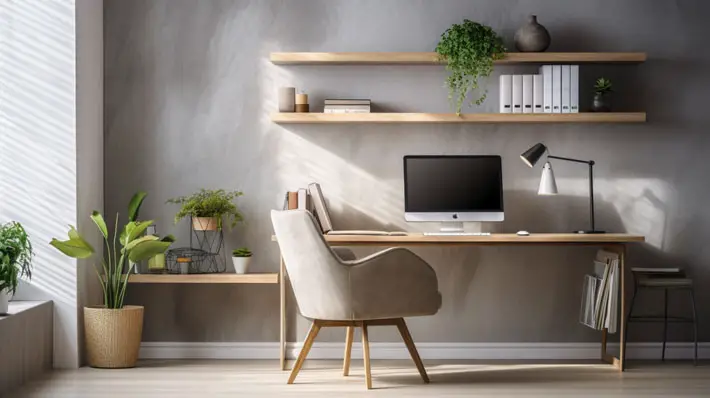The Science Of Comfort: Elevating Employee Well-being In Hybrid Workspaces

Hybrid work is here to stay, with 83% of UK companies adopting flexible models. But what does this workplace shift mean for office design? Forward-thinking companies are optimising spaces for collaboration while enabling remote work. The future is adaptable workspaces that make employees comfortable, happy, and productive. However, creating the optimal environment requires more than just furniture and video conferencing tools. Human-centric design considers how factors like lighting, acoustics, layouts and ergonomics affect well-being, focus and engagement. With insights from pioneers, any organisation can craft productive hybrid workspaces employees love. Let’s explore the science behind getting the blend just right.
The New Norm: Adapting To Hybrid Workspaces
The pandemic made flexible work the new norm. However, it’s now more important than ever to provide your employees with the right work environment – especially when you require them to return to the office, even if it’s just a few times a week. Gone are the days of rigid office cubicles – employees now expect spaces as adaptable as how they work. Furnify’s modern office furniture enables teams to effortlessly switch between open layouts for brainstorming and private areas for focused work. Their ergonomic, human-centric designs based on the latest research put comfort at the forefront. And if you approach the design of your office right, you might be able to boost the overall productivity of your employees.
The Science Behind Comfort
Optimising comfort goes beyond just chairs and desks – it’s understanding human psychology and physiology. Natural light, greenery, and warm colours boost positivity and focus. Enclosed spaces allow quiet reflection, while open layouts energise collaboration. Differentiation gives employees control over their environment. They can adjust their workplace to create optimal conditions to get in the zone and focus on their tasks. With science-backed, innovative solutions, the future of workspace prioritises nurturing productivity through comfort and flexibility.
The Financial Upside Of Happy Employees
While some may see focusing on comfort as an extra expense, the data shows it pays dividends. A study from EEF found companies that prioritise wellness and ergonomics see productivity boosts of up to 10%. Happy and healthy employees take less sick time and are more engaged, recouping costs many times over.
Of course, revamping workspaces requires upfront investment. But the long view reveals how transformative changes unlock major gains down the road. Factoring in turnover savings and medical costs, Deloitte’s 2022 report shows that every £1 spent on wellness initiatives yields £5 return on investment.
It also prevents hidden costs that accumulate when workers operate in discomfort. Back and neck pain from poor ergonomics leads to lost time and lower performance. Environments lacking natural light or greenery take a toll on mental health. The benefits of optimising for comfort far outweigh the costs.
Neurodiversity And Inclusion In A Workplace
While comfort maximises engagement across the board, it’s particularly impactful in fostering neurodiversity and inclusion. Each employee has unique needs shaped by mental wiring and physical abilities. As Birkbeck Professors Almuth McDowall and Nancy Doyle stated for The Psychologist:
“The employees in our data set report strong views about their intentions to leave – not a normal distribution – as about a fourth think a lot about leaving, and a fourth don’t, the others are in the middle of a bimodal distribution. Tailored adjustments make people stay, and lack of adjustments make them leave – so the adjustments are a baseline every organisation needs in place.”
An environment tailored to the “average” worker inevitably excludes those who differ.
Best practices in accessibility and design account for needs like sensory sensitivity and mobility restrictions. Simple upgrades like noise-cancelling furniture, voice technology, and adjustable standing desks enable everyone to work at their best.
Making small tweaks to improve comfort and inclusion doesn’t have to be costly. However, ignoring these factors leads to turnover, lowered innovation, and conflict. Prioritising diversity and comfort lifts up every employee.
Trends And Future Outlook
Looking ahead, several workspace trends point to further blurring the lines between home and office. From residential design cues to remote collaboration tech, the most forward-thinking companies are creating genuinely hybrid spaces optimised for flexibility.
Natural materials like wood and plants bring biophilic comfort to more corporate settings. Warm, textured finishes and ambient lighting provide a residential feel. Major tech innovations on the horizon include VR collaboration and hologram workstations, making remote employees feel physically present.
While fads come and go, the future points toward human-centric design that holistically nurtures productivity. Companies getting ahead of the curve today will reap the benefits tomorrow.
Actionable Tips For Employers
Where to start on the path toward comfortable, flexible workspaces? Begin with small enhancements deliverable in the short term while planning long-term overhaul. Surveying employees is critical – input on needs and pain points should guide decisions.
Quick comfort wins include providing ergonomic equipment, installing air purifiers, and allowing flexible schedules and locations. For larger redesigns, expert consultants can help develop floorplans and suggest finishes and furnishings aligned to your goals.
Ongoing tuning is key – be ready to tweak and reinvent based on usage patterns and feedback. Dedicated collaboration nooks may become impromptu breakrooms. An open floor plan could need more private areas. Nimble spaces accommodate natural evolution.
While each company’s needs differ, putting employee comfort first is universal. Workers staying late out of passion, not obligation – that is the office of the future.
Conclusion: Adopting A Holistic Approach For A More Inclusive Future
The data is clear: human-centric design that prioritises comfort, flexibility, and wellness is the future of workspaces. Companies that empower employees through their environments will win the war on talent.
But this goes beyond sleek furniture and video calls. Truly progressive leaders take a holistic approach, considering how each design decision impacts engagement on biological, psychological, and social levels.
As work continues blending with life, spaces must evolve. While change takes investment, the rewards of boosted retention, satisfaction, innovation, and performance are immense. By following the workforce’s lead, any organisation can create offices where people flourish.










